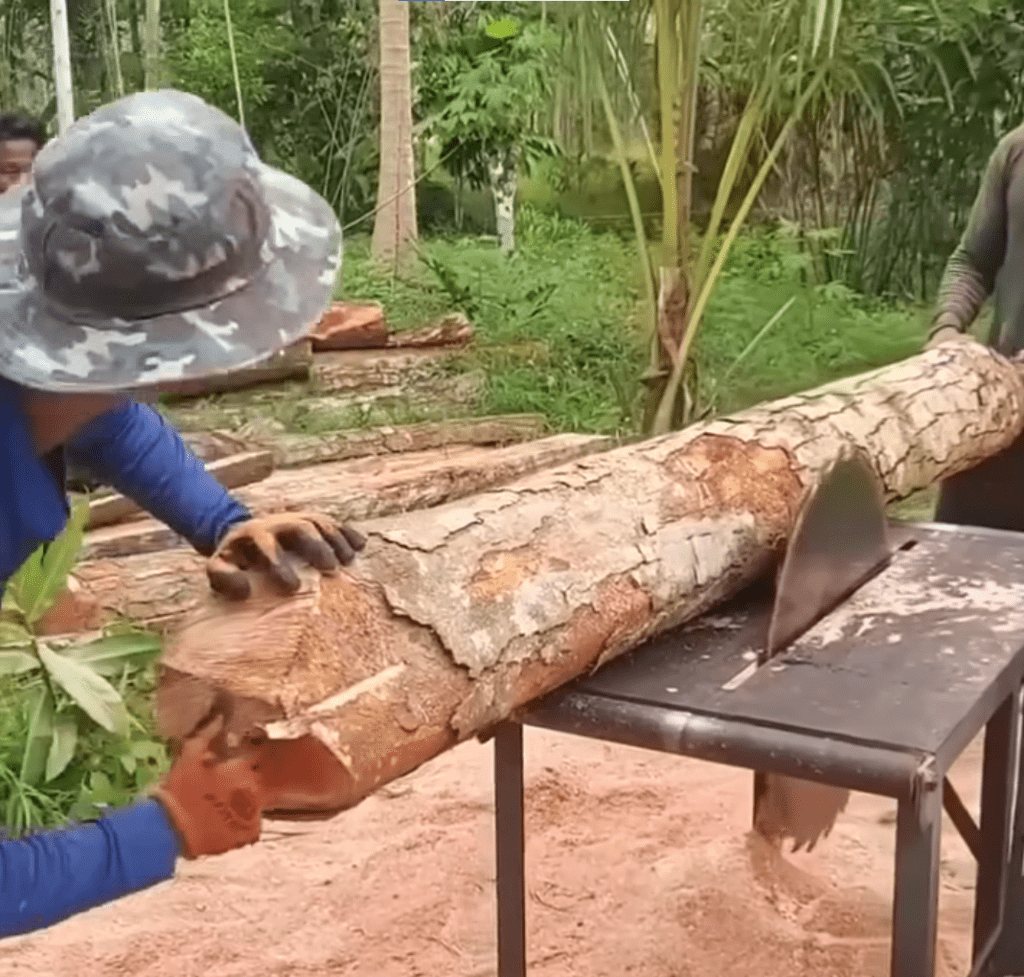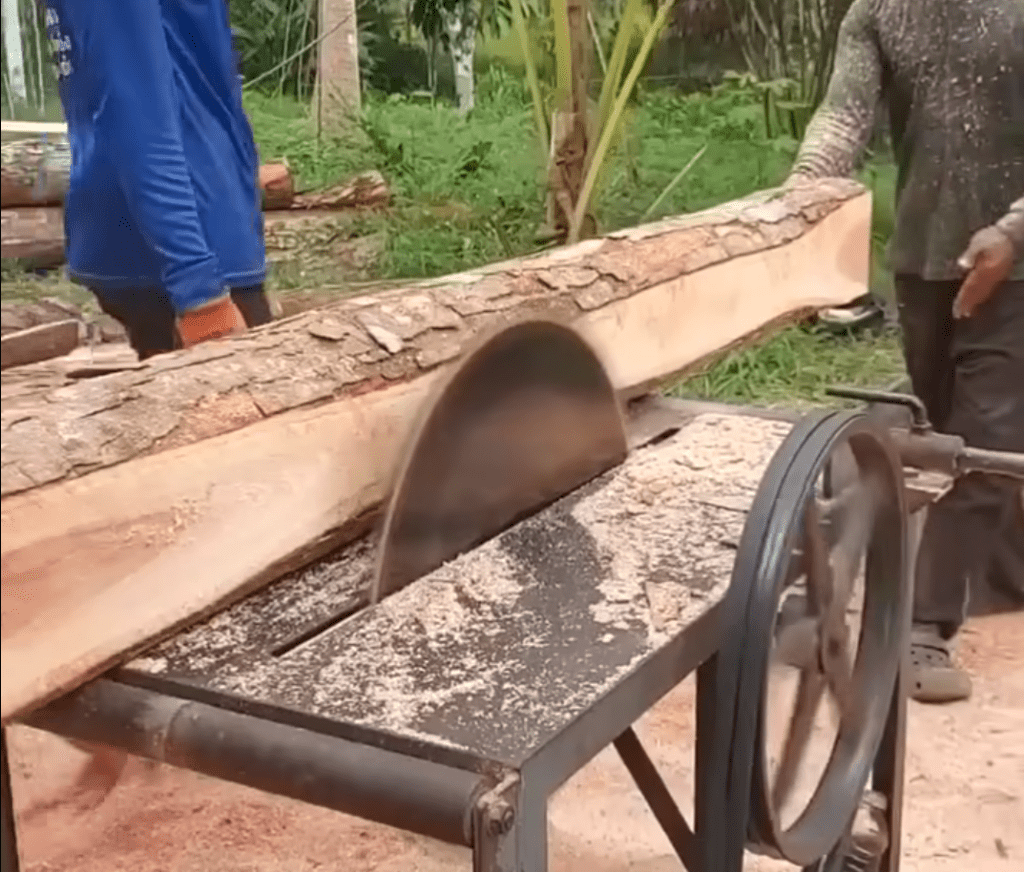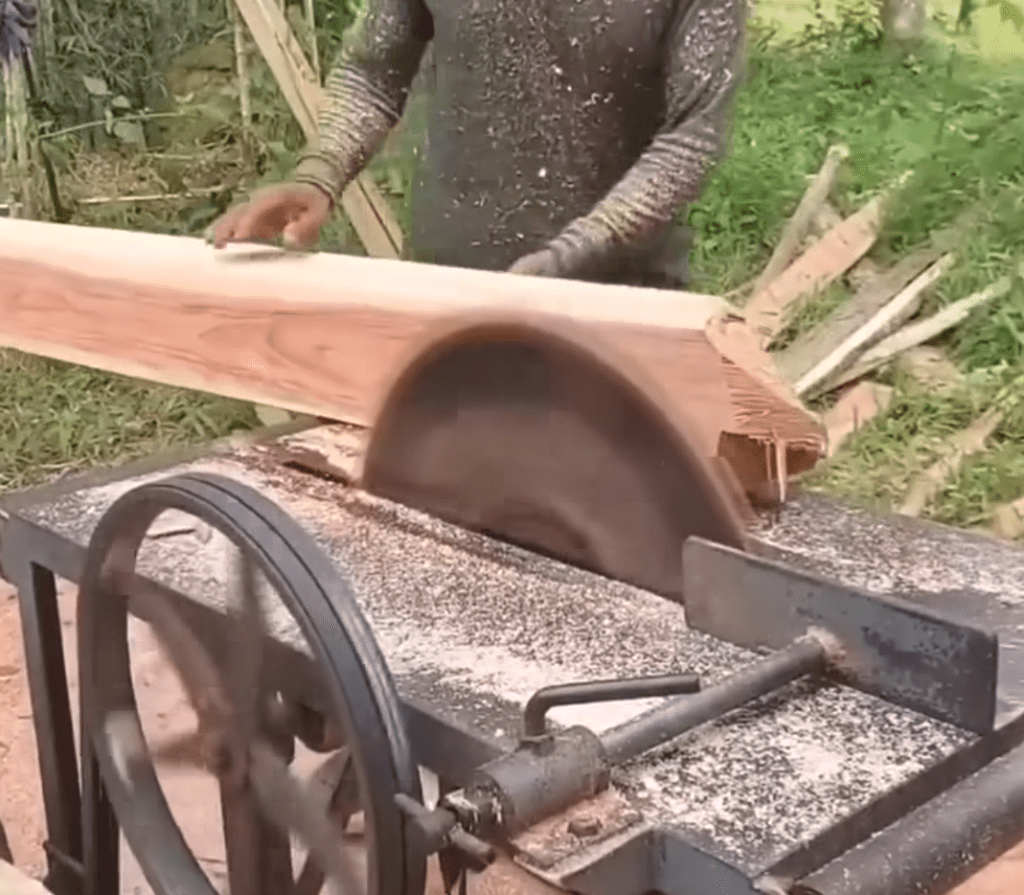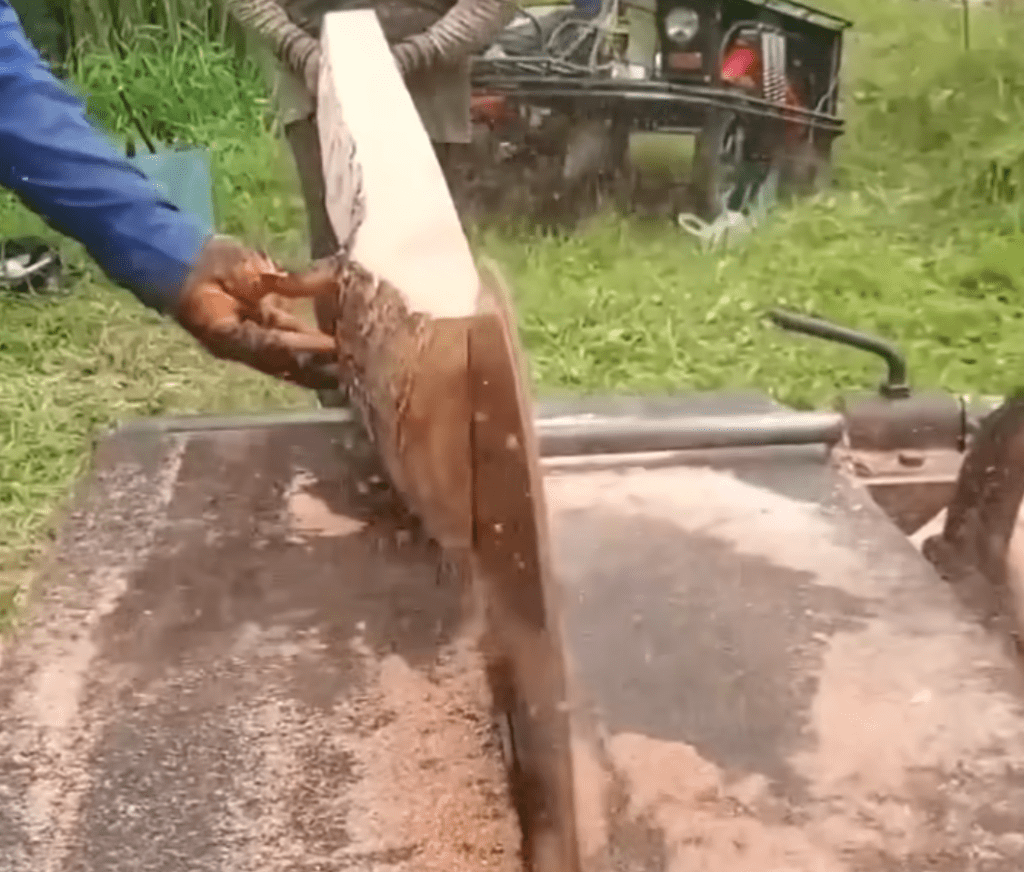In an age of technological advancements, there’s something uniquely satisfying about watching skilled craftspeople wield traditional tools with expert precision. One of the most remarkable displays of skill can be found in teams specializing in wood slicing—a delicate art that combines strength, coordination, and technical finesse. Whether for construction, furniture-making, or art, the precision and craftsmanship involved in slicing wood by hand are testaments to human capability, refined by teamwork.


A Symphony of Precision and Power
Wood slicing may sound simple, but the process requires a combination of strength and technique to produce a clean, even cut. It’s not merely about cutting the wood but slicing it in a way that maintains the integrity of the material while adhering to specific dimensions. In the hands of a seasoned team, even the most robust hardwood can be divided seamlessly, ready for use in a wide array of applications.
What makes this process even more fascinating is the need for synchronization. Often, the process requires multiple people to handle saws and axes simultaneously. The team must act as a single unit, with each individual playing a critical role. The process depends on precise timing, coordination, and a shared understanding of the task at hand, making it an impressive feat of teamwork.



Tools of the Trade
Although machines like chainsaws and mechanized sawmills are available, traditional wood slicing remains popular for its precision and control. Axes, handsaws, and wedges are among the tools used, each requiring different techniques and handling methods. Each tool has a specific purpose; for example, axes are primarily used for splitting wood along its natural grain, while handsaws allow for more controlled, intricate cuts.
Additionally, these teams often incorporate specific techniques, like adjusting the slicing angle or applying controlled force to achieve clean cuts. Achieving the desired outcome demands both knowledge of wood’s natural grain patterns and a keen eye for precision.
Training and Skill Development
Wood slicing is a skill honed over years. Many teams work together for decades, refining their techniques and building an understanding of each member’s strengths and preferences. This deep bond enables them to communicate effectively, even without words, a vital asset when working with sharp tools in close quarters.
Training for such precision work involves not just practice, but also mentorship, where experienced members impart valuable skills to newcomers. This tradition of passing down techniques helps preserve the craft, and it keeps the focus on quality and safety, even when operating under tight deadlines or challenging conditions.


Applications of Wood Slicing
The skills demonstrated by these wood-slicing teams find practical applications in many industries:
- Construction – High-quality, cleanly sliced wood is vital for constructing homes and buildings. The smooth finish allows for easy assembly and minimizes the need for additional processing.
- Furniture-Making – For high-end, handcrafted furniture, perfectly sliced wood is essential. The clean cut reduces the risk of splintering and makes for a more durable final product.
- Art and Sculpture – Many artists prefer traditionally sliced wood for sculptures, appreciating the texture and precision that only skilled hands can achieve.
- Historical Restoration – When restoring historic buildings, using traditional methods preserves authenticity, and many restoration teams prefer hand-sliced wood to maintain the building’s integrity.
The Importance of Teamwork in Wood Slicing
Perhaps the most inspiring aspect of wood slicing is the teamwork that goes into it. Each member’s role is essential, and the bond they share is evident in their coordinated movements and silent communication. Such cohesion and trust are rare in many modern workplaces but are paramount in this craft.
Teamwork in wood slicing is a living example of the old adage, “The whole is greater than the sum of its parts.” The synergy within the team not only makes the work faster but also improves the quality of the cuts, ultimately producing a final product that embodies the skill and unity of the craftsmen who created it.
Conclusion
Wood slicing is more than just a technical skill; it’s an art form that demands incredible precision, deep knowledge, and absolute teamwork. As long as people value craftsmanship, traditional wood slicing will continue to stand as a testament to human skill and cooperation. These teams remind us that while technology can provide efficiency, the spirit of teamwork and the touch of skilled hands will always be irreplaceable.


